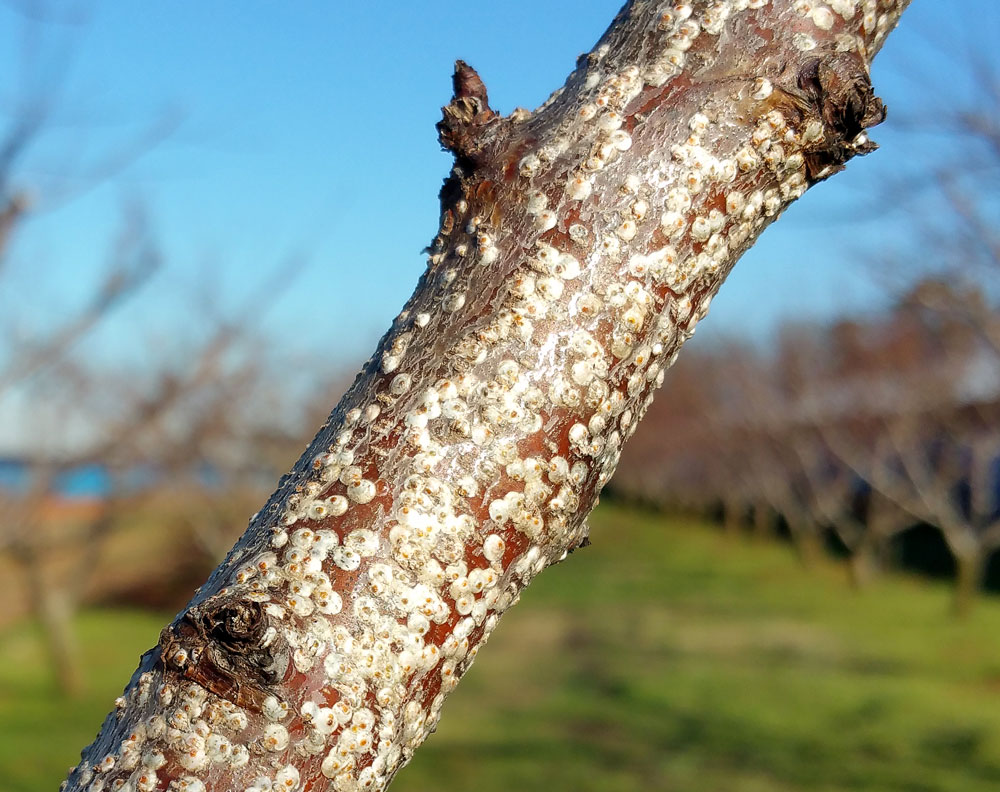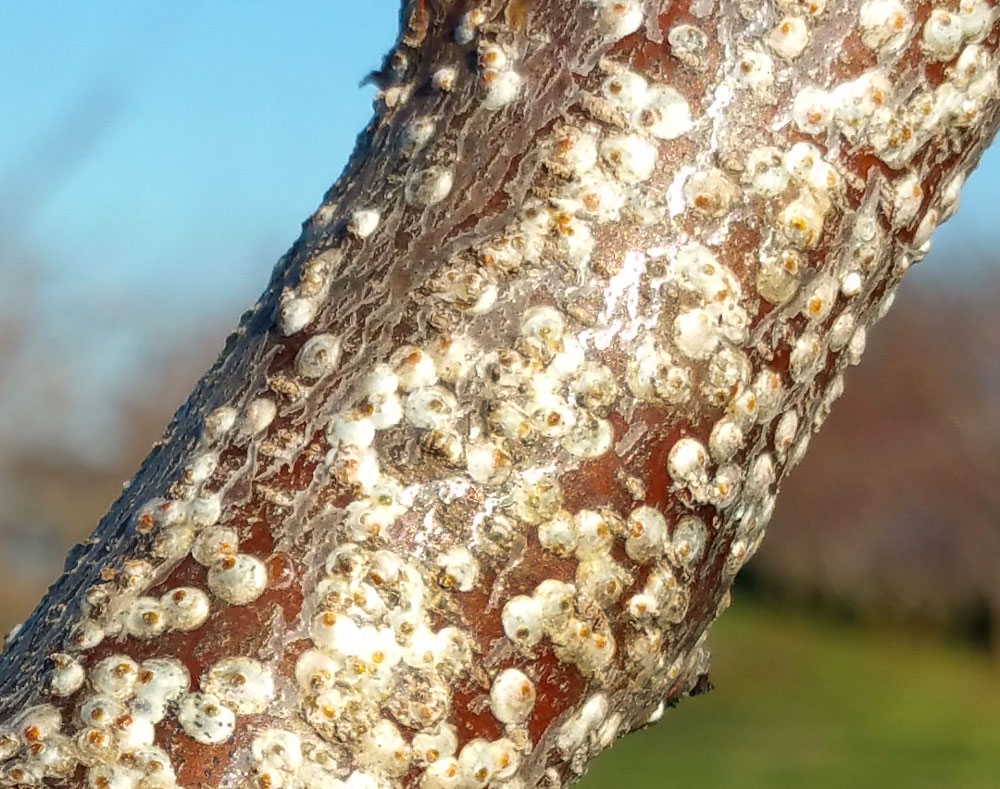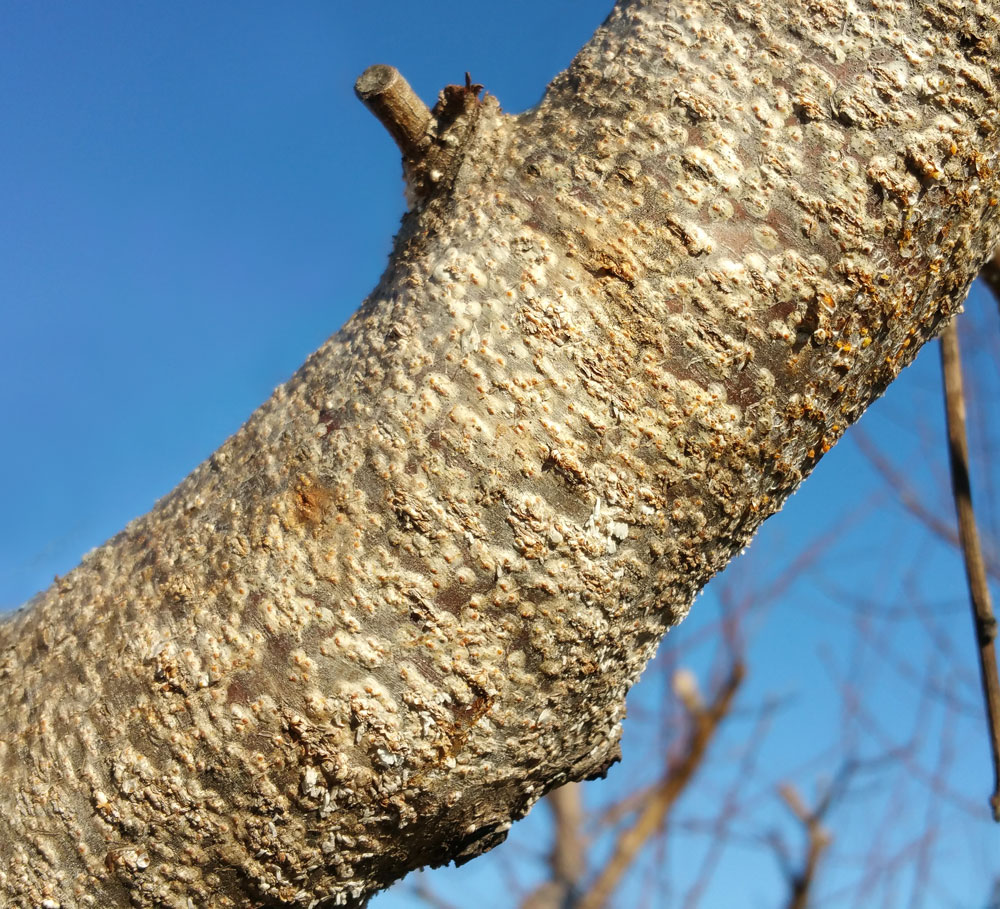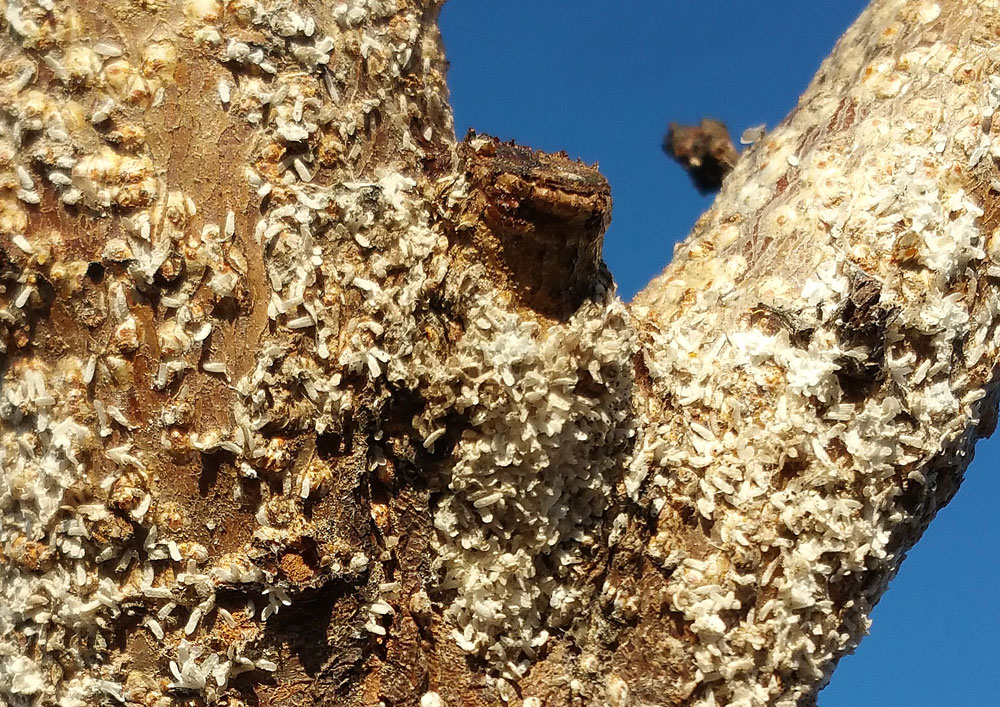Check Fruit Trees for Scale Pests
go.ncsu.edu/readext?397658
en Español / em Português
El inglés es el idioma de control de esta página. En la medida en que haya algún conflicto entre la traducción al inglés y la traducción, el inglés prevalece.
Al hacer clic en el enlace de traducción se activa un servicio de traducción gratuito para convertir la página al español. Al igual que con cualquier traducción por Internet, la conversión no es sensible al contexto y puede que no traduzca el texto en su significado original. NC State Extension no garantiza la exactitud del texto traducido. Por favor, tenga en cuenta que algunas aplicaciones y/o servicios pueden no funcionar como se espera cuando se traducen.
Português
Inglês é o idioma de controle desta página. Na medida que haja algum conflito entre o texto original em Inglês e a tradução, o Inglês prevalece.
Ao clicar no link de tradução, um serviço gratuito de tradução será ativado para converter a página para o Português. Como em qualquer tradução pela internet, a conversão não é sensivel ao contexto e pode não ocorrer a tradução para o significado orginal. O serviço de Extensão da Carolina do Norte (NC State Extension) não garante a exatidão do texto traduzido. Por favor, observe que algumas funções ou serviços podem não funcionar como esperado após a tradução.
English
English is the controlling language of this page. To the extent there is any conflict between the English text and the translation, English controls.
Clicking on the translation link activates a free translation service to convert the page to Spanish. As with any Internet translation, the conversion is not context-sensitive and may not translate the text to its original meaning. NC State Extension does not guarantee the accuracy of the translated text. Please note that some applications and/or services may not function as expected when translated.
Collapse ▲If you have fruit trees, now is a good time to inspect them for scale insects. White peach scale and San Jose scale are serious pests that can kill fruit trees within a few years if not controlled. They can be a problem on peach, nectarine, apple, pear, cherry, and plum trees. Many woody ornamentals are also host plants. Scale insects feed on the bark, leaves, and fruit of the host plant and can cause stunting, leaf drop, fruit lesions, and eventually death of branches or entire trees if populations are high and left untreated.

White peach scale on a peach tree. They are also pests of other fruit and woody ornamental trees. Photo by Debbie Roos.
Scale insects are unique because they build a protective armor as they grow. They overwinter on the plant and then start reproducing in the spring. White peach scales lay eggs which hatch into nymphs while San Jose scales give live birth to nymphs. The young nymphs, also called crawlers, become active in early May in the piedmont and feed by inserting their mouthparts into the host plant. As they grow and molt they build their protective armor covering. Scales produce several generations in North Carolina.

Close-up of the armor covering female white peach scales. Adult female scales are immobile. They create their protective shell by mixing cast skins from their previous molts with wax secreted from glands on their body. Sometimes bark from the host plant is mixed in and helps camouflage the shell. Photo by Debbie Roos.

These orange-colored white peach scale adult females were protected under their armored covering and carefully uncovered with a sharp knife. Photo by Debbie Roos.

Close-up of male white peach scales. Males have an elongated shell. Male white peach scales have wings and use them to locate females for mating. Photo by Debbie Roos.
If you have scales on your trees, you can spray them with a horticultural oil. This will smother scales and also mites and other soft-bodied insects. Horticultural oil is approved for organic production and is used by both organic and conventional growers. Horticultural oils were traditionally known as “dormant oils” and were originally intended to be applied in the winter when trees were dormant because they could damage green tissue. Horticultural oils called “summer oils” were safe to apply in the summer. However, these days most horticultural oils are so refined they are safe to apply in all seasons and this will be indicated on the label. A lower application rate would be used in the growing season so make sure and read the label carefully and follow the directions.
When applying a horticultural oil to control scales, it’s important to have thorough coverage because the pests love to hang out in the nooks and crannies of the tree branches. Avoid spraying within 24 hours of freezing temperatures or rain. If you have a heavy infestation you could spray again around mid-May at a lower rate (0.5-1% solution).
Unlike some pesticides, horticultural oils don’t harm most beneficial insects (with the exception of species like predatory mites which would not be able to get out of the way of a spray in time) so hopefully you’ll have good populations of parasitic wasps, lady beetles, and lacewings to help keep scales and mites at tolerable levels.
For more information:
White Peach Scale – North Carolina State University
San Jose Scale – North Carolina State University
Pest and Disease Control Using Horticultural Oils – Colorado State University




